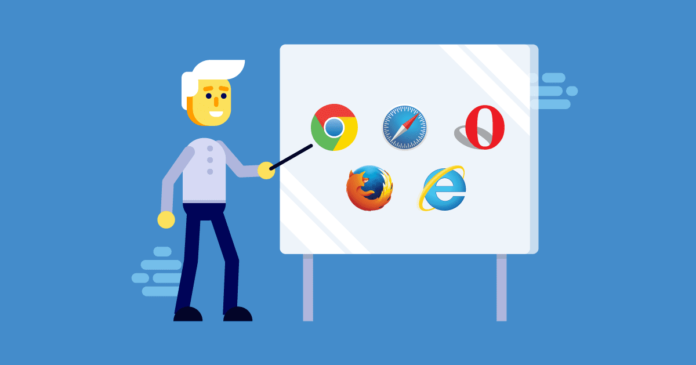
Can you imagine how frustrating losing a potential customer is just because your website didn’t work on a handful of browsers? Having a site that’s functional only on Chrome and Mozilla isn’t enough. It’s not worth losing a visitor that could have become a customer and that too a loyal one!
Cross browser testing addresses this issue and ensures that your website performs consistently regardless of the browser users are using. Every browser has a different rendering method that can cause errors in features, functionalities, or even layout.
Fortunately, you have a wide array of cross-browser testing tools at your disposal. Unfortunately, there are so many that making an informed decision when it comes to choosing the right tool can become daunting.
Therefore, to make things easier for you, we’re listing out the top 10 cross-browser testing tools. You can check out their individual features and compare them before deciding what suits you the best. Let’s take a look.
1. LambdaTest
Trusted by more than 420,000 users, LambdaTest is one of the leading cross-browser testing platforms. You can perform cross-browser testing on various mobile and desktop browsers. The wide range of legacy as well as latest browsers along with the option to choose between Mac and Windows operating systems add to its versatility.
Testers can run selenium test automation scripts on both desktop and mobile browsers. This helps in faster development, testing, and delivery, thanks to the platform’s online automation browser testing grid. You can save the effort from manual bug management by integrating LambdaTest with the tools of your choice.
LambdaTest is easily available as a WordPress plugin and Chrome extension. Integrated developer tools help in debugging various issues during live testing. The provision of geolocation testing and testing of locally hosted pages makes the tool further useful.
The biggest specialty of LambdaTest is that you have access to both manual and automated cross-browser testing. The 24/7 availability of the customer support team helps in the quicker resolution of issues. You can test on various screen resolutions and generate automated screenshots across various combinations. The tactful blend of continuous support, screenshot testing, responsive testing, automation testing, and real-time browser testing makes LambdaTest an ideal tool for cross-browser testing.
2. BrowserStack
BrowserStack is another cloud-based tool that helps in checking the compatibility of websites and web applications with different browsers and operating systems. It provides a comprehensive system for debugging and cross-browser testing, thanks to features like local testing, APIs, screenshots, responsive testing.
It offers support for firewalls, active directories, proxies. The developer tools are pre-installed and that contributes to quick debugging as well as cross-browser testing. Just like LambdaTest, it offers a cloud-based platform and eliminates the need for installations. However, BrowserStack comes with a hefty price tag.
3. Browsershots
Browsershots is an open-source cross-browser testing platform that allows users to run compatibility tests. Some customization options for that include JavaScript status, color depth browser type, and operating system. You can take screenshots in different operating systems and over 60 + browsers. It even offers support for rarely-heard browsers such as SeaMonkey, Epiphany, Rekonq, Iceweasel, Luakit, and Konqueror.
4. Crossbrowsertesting
As the name suggests, Crossbrowsertesting is one of the leading cross-browser testing tools to check how websites and web applications render on mobile, desktop browsers, and remote VNC. It offers support for 1000+ browser and operating system combinations.
You can easily test AJAX, JavaScript, HTML forms, and Flash. Besides that, testers can also compare the differences being rendered on various resolutions and platforms with the help of their automated screenshots. The localhost support enables testers to test those websites that are behind firewalls and are under development. This facilitates a more comprehensive environment for testing.
5. Experitest
If you are looking for a tool with the help of which you can run Appium and Selenium tests against real Android iOS and desktop devices, Experitest is the way to go. Parallel testing helps in shortening test cycles.
The tool helps in the quick detection and fixing of bugs along with videos, log files screenshots, and in-depth reports. Testers can even manually debug code while testing different functionalities. You can easily automate the cross-browser testing process a cross over 1000 operating systems and browsers.
But the combinations are less than those of LambdaTest, which allows testers to test a site across 2000+ combinations. However, if you are on a budget and need standard features, you can opt for Experitest for your cross-browser testing needs.
6. Browserling
Browserling provides testing minutes without any limits. The free testing plan allows you to see whether the tool is going to work for you in the long haul. You can easily capture and share your testing process screenshots with the entire team, thanks to the seamless collaboration.
Some other features of this testing tool include dedicated servers, API support for testing of locally hosted applications, and support for all major browsers. All in all, it’s a great tool if automation is not your top priority right now.
7. Ranorex Studio
Unlike the tools we mentioned above, Ranorex Studio is more of a comprehensive solution for websites and web apps. Besides cross-browser testing facilities, it also provides users with the ability to automate tests for Salesforce, Flex applications, Slash, Java, JavaScript websites, HTML5, and so on.
It also offers support for elements in cross-domain iframes, JxBrowser, shadow DOM, and hybrid desktop applications. Ranorex Studio has built-in support for Selenium WebDriver and allows the distribution of various tests on a Selenium grid. Some other features include parallel testing, keyword-driven testing, data-driven testing, video recording of the procedure, and easy integration with Jira, Git, and TestRail.
8. Sauce Labs
Sauce Labs is a cloud-based cross-browser testing tool that offers support for JavaScript, mobile, selenium as well as manual testing. You can easily run tests on 260+ browsers, devices, and platforms.
It eliminates the need for setting up or maintaining VM and enables accessing live breakpoints for manual investigation of a problem if required. You can even list out the tests you ran recently and gain easy access to information such as the testing platform, runtime, build, and how the test performed.
It has 10+ years of experience backing up its credibility. Sauce Labs also offer vast test coverage, appropriate scalability, and speeds up the STLC. At the same time, it also helps testers reduce their build time.
9. IEtester
Believe it or not, internet explorer is not a thing of the past yet. The vast usage of Chrome and Mozilla has made users believe that internet explorer is dead which is far from reality. Since it still has a decent user base across the globe, it’s vital that testers test their websites and web apps across internet explorer and its different versions.
Since it’s an open-source tool, you don’t have to worry about budget constraints. It offers support for Windows XP, Vista, Windows 7, and Windows 8.
10. Functionize
Functionize eliminates the need of creating test scripts from scratch. It uses NLP technology to create tests along with Artificial Intelligence. In other words, all you need to do is write your test in simple English. For instance, if you have already set up your tests for a browser, you wouldn’t have to recode those for others. Doesn’t it sound like a big time saver?
Since it allows parallel testing across different operating systems and browsers, Functionize helps in speeding up the cross-browser testing process. Even if there are some densities or complexities in your web pages, this tool helps you perform seamless visual testing. It also provides details about anomalies and runtime errors specific to the browser.
Final Words:
You don’t deserve users missing out on your website’s state-of-the-art features and functionalities just because it didn’t render on the browsers they were using. Using the right tool can make or break your cross-browser testing efforts.
If you end up with the right one, you can ensure consistent website behavior and user experience regardless of the browser version, device, or operating system. However, if you end up making the wrong choice you will be missing out on potential loyal customers that could have generated steady revenue.
In the above list, I have covered the top 10 cross-browser testing tools according to their ease of use and feature sets. Use it as a reference for comparisons and choose the one that goes in line with your business requirement. Do you think we missed out on something? Sound off in the comments below.











